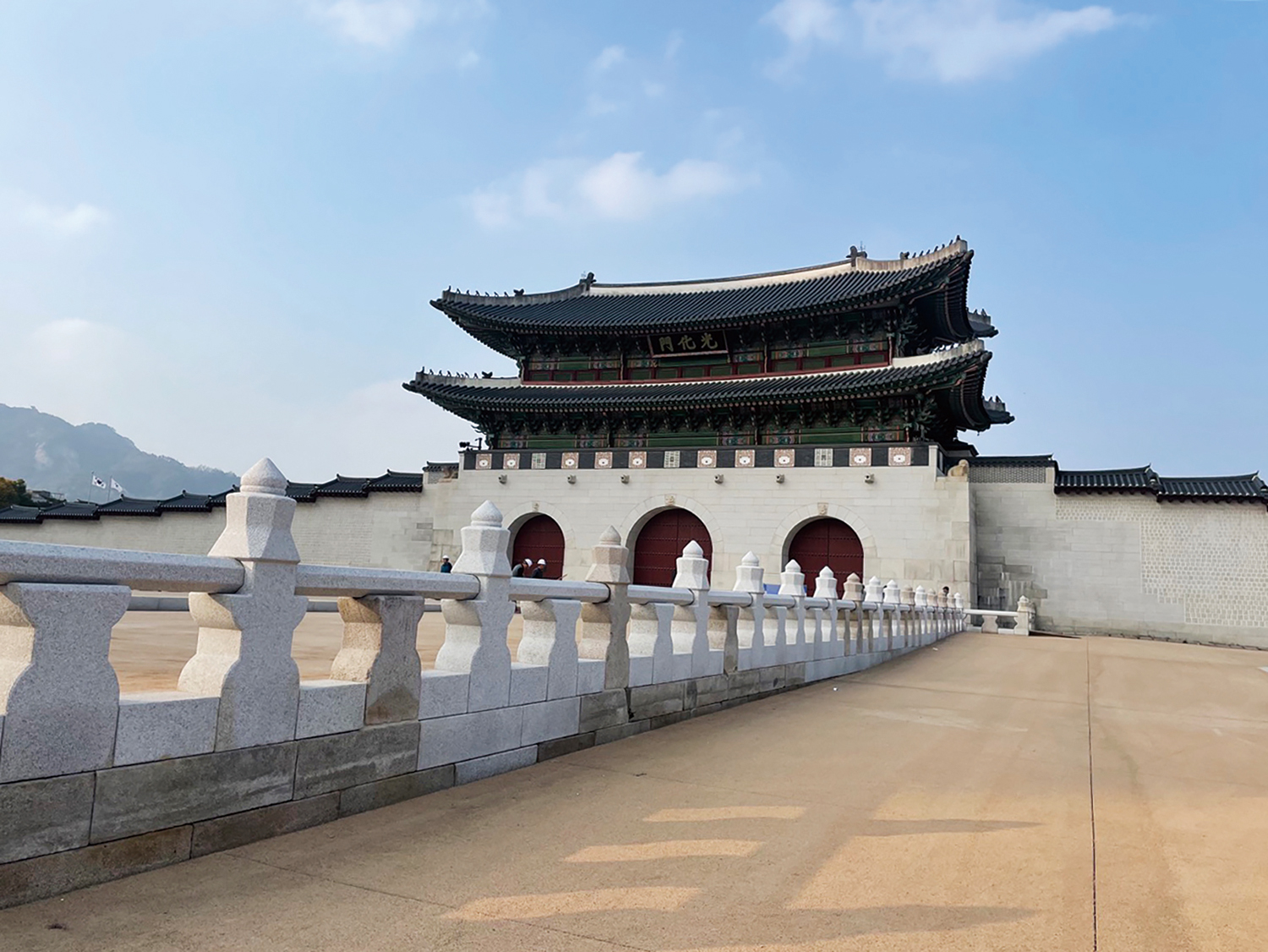SPACE December 2023 (No. 673)
On Oct. 15, the Seoul Metropolitan Government and the Cultural Heritage Administration completed their restoration of Gwanghwamun Gateʼs Woldae and it was opened to the public. At a length of 48.7m, width 29.7m, and height of 0.7m, it extends towards Yukjo Street. It is distinctive for its nanganseok (railing stones) which surround it like a fence, and a king’s path about 7m wide at the centre of the base. Statues of Seosu and Haechi (imaginary animals), and the signage of Gwanghwamun Gate have all been restored to their original places along with the restoration of Woldae.
Woldae is a high and wide platform installed in front of important buildings such as palaces, Jongmyo Shrine, and etc., during the Joseon Dynasty. It is a symbol of the kingʼs prestige and is interpreted as a space in which major royal events were held and communication between the common and the king took place. The newly restored Gwanghwamun Gateʼs Woldae takes the form of the Gyeongbokgung Palace, which was restored by King Gojong of Korea in 1866 after the Japanese Invasion of Korea. The Woldae in the rebuilt Gyeongbokgung Palace was destroyed in the 1920’s when the Japanese laid a railroad in front of Gwanghwamun Gate and it was left buried in the grounds.
Gwanghwamun Gate’s restoration and maintenance project has been steadily underway since 2006. As part of the project, parts of Woldae’s remains were identified in the excavation of the Gyeongbokgung Palace in 2007. The puzzle was gradually assembled as nanganseok and statues of Seosu were found in the East Nine Royal Tombs, Guri, and in the front yards of the Hoam Museum of Art.
The Cultural Heritage Administration views the restoration of Woldae as the final step in the restoration of Gwanghwamun Gate. Last year, the width and area of the square was expanded and made into a park with the restructuring of the Gwanghwamun Square, and with the restoration of the Woldae, the main axis connecting Gyeongbokgung Palace and the Gwanghwamun Square was reconnected after years of severance. Still questions remain concerning the meaning and value that the restored Woldae can have historically and from its current urban standpoint. For years, the main focus of the restoration project of Woldae was the excavation of physical evidence and restoring signs from the past to their original state. Bae Woosung (professor, University of Seoul) addressed this issue at a forum held by the Royal Palaces and Tombs Center of the Cultural Heritage Administration celebrating the restoration of the Woldae. He raised the question, ‘Can the historicity of a place be revealed simply by querying the presence or absence of direct, physical evidence?’ He claimed that the historical importance of the woldae must be addressed at a deeper level, especially seeing as the woldae is an architectural structure that privileges a politics for the people and in which an ethics of the commons is condensed and inherited. Ahn Changmo (professor, Kyonggi University) also suggested that there is a need to not only pursue the physical integrity of Gyeongbokgung Palace, including Woldae, but also to review and reconstruct historicity and sense of place of the Gyeongbokgung Palace and Gwanghwamun Square, which were not properly conveyed during transition from the Joseon Dynasty to modern times.

View of the street in front of Gwanghwamun Gate, revealing the appearance of Woldae and statue of Haechi / Image courtesy of Seoul Museum of History

Woldae after restoration completed last Oct. ©Youn Yaelim





